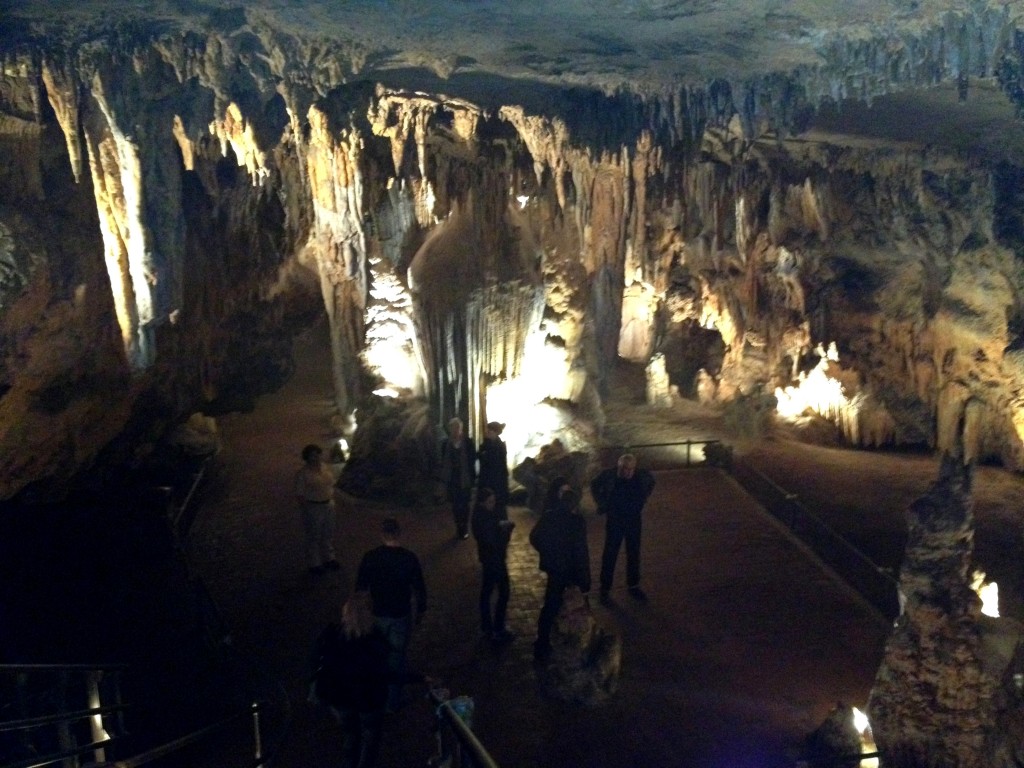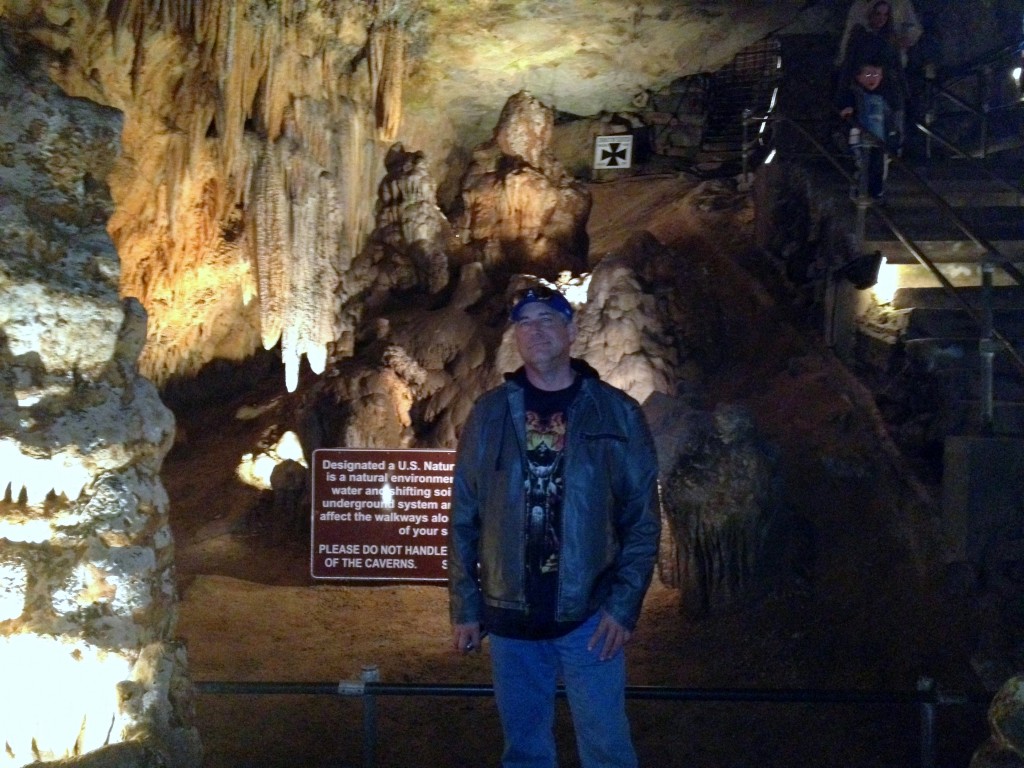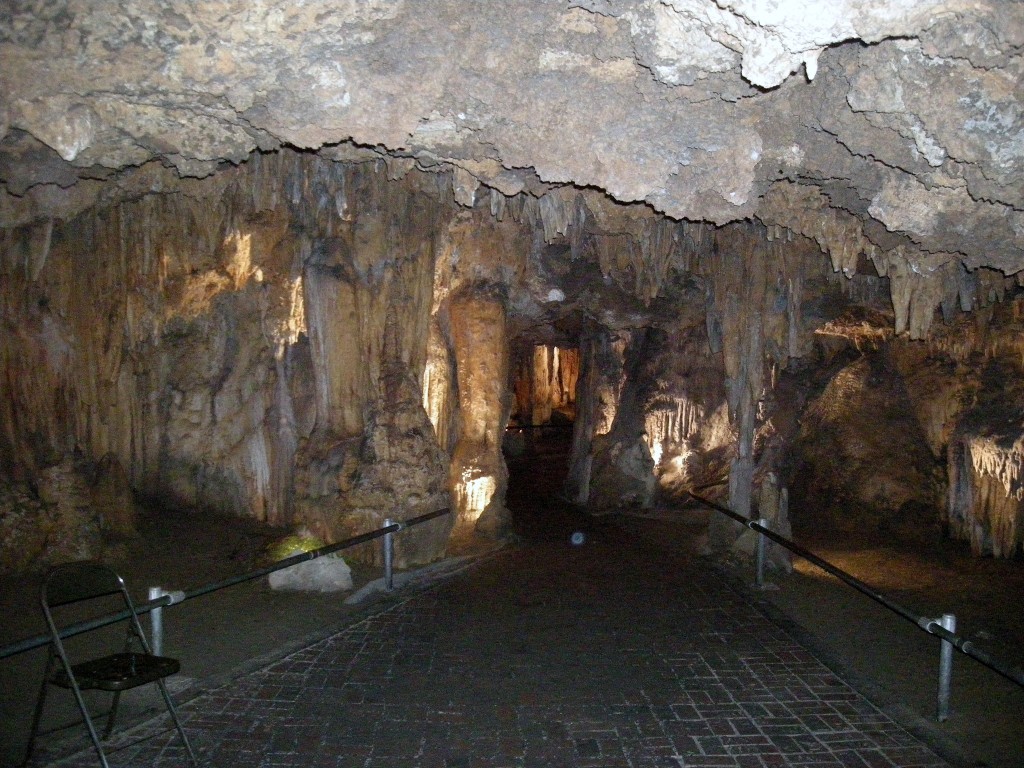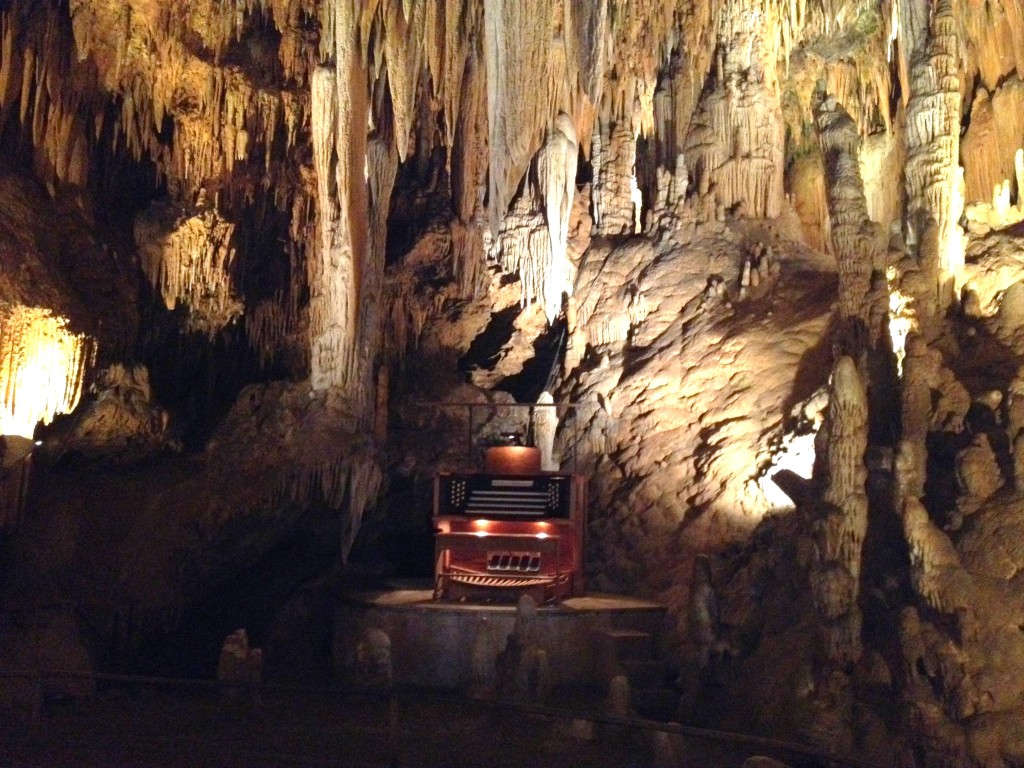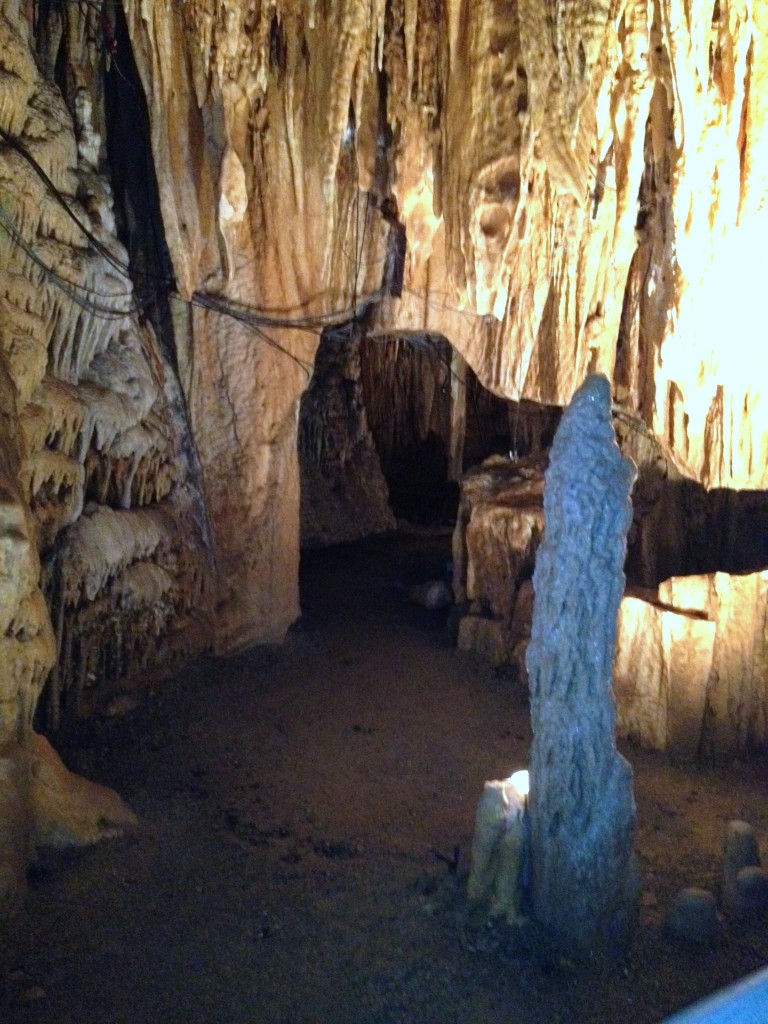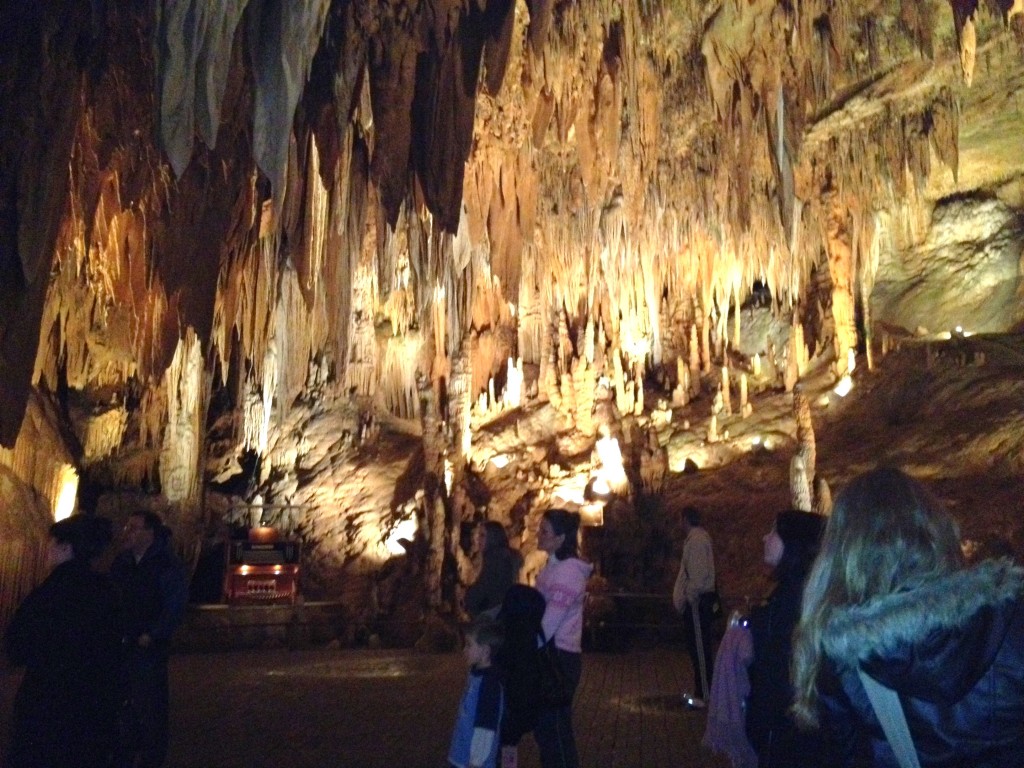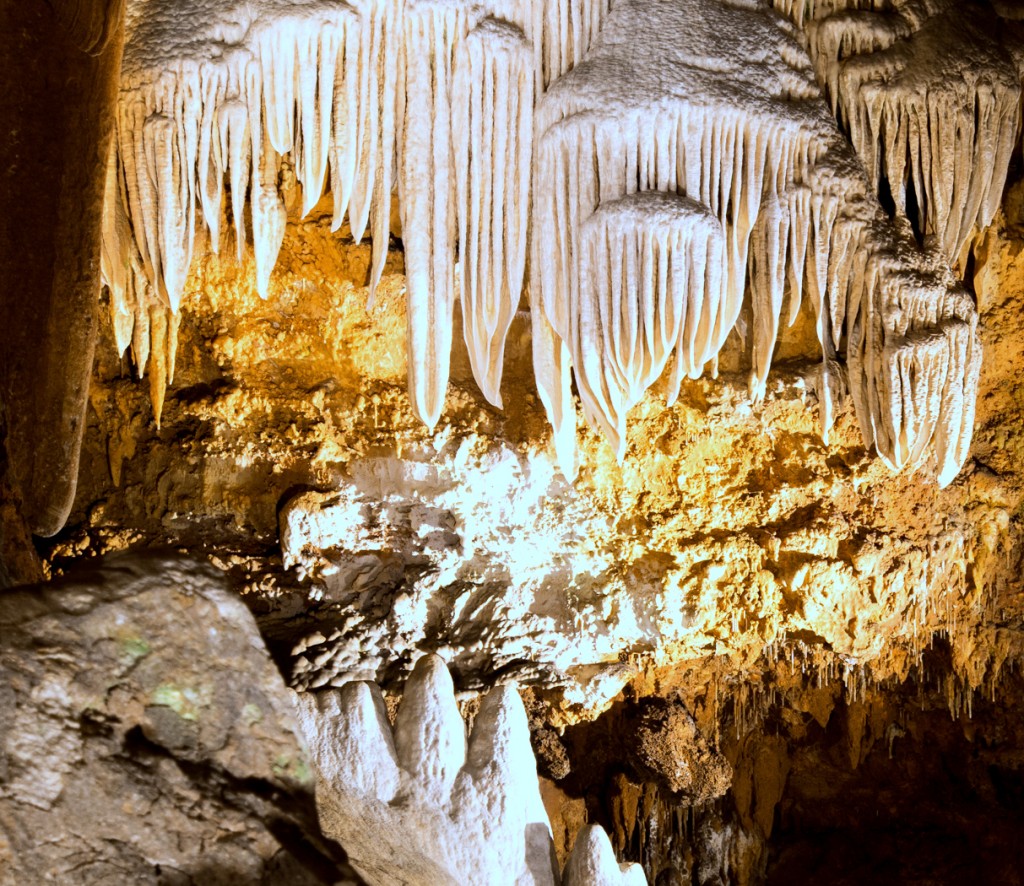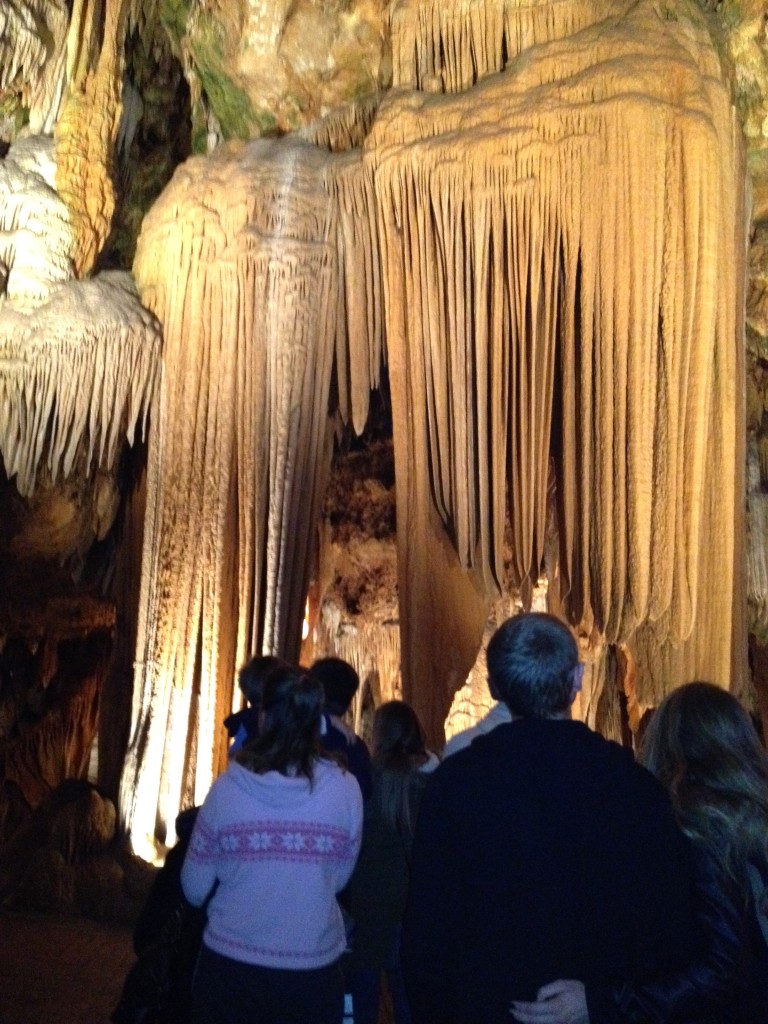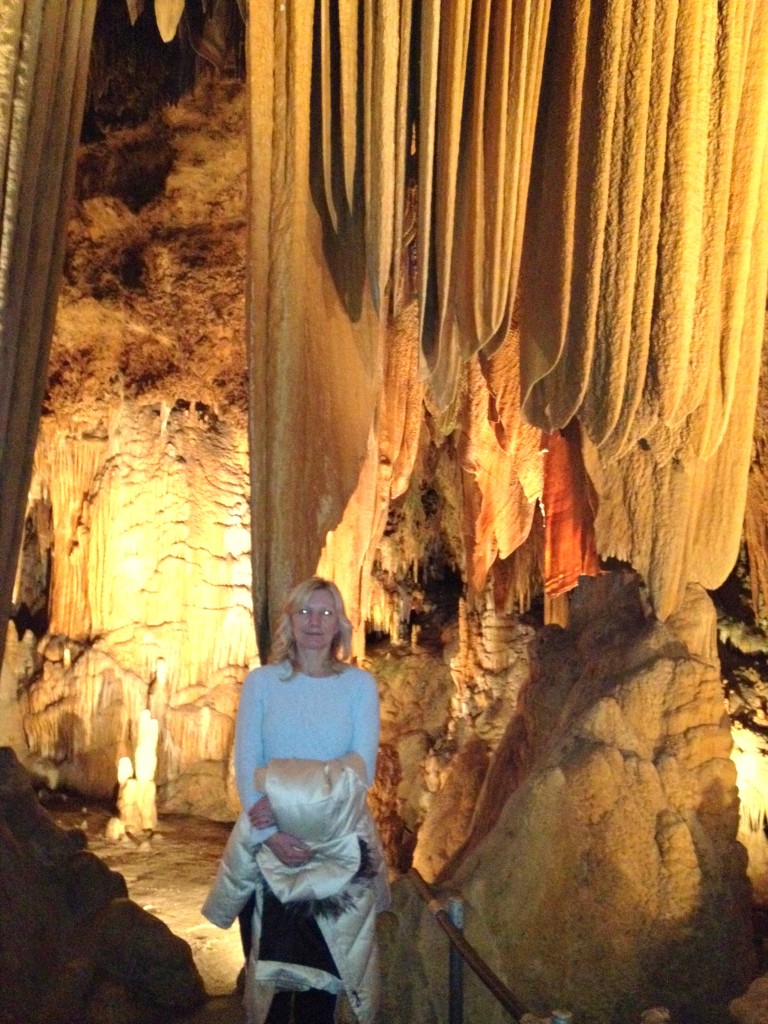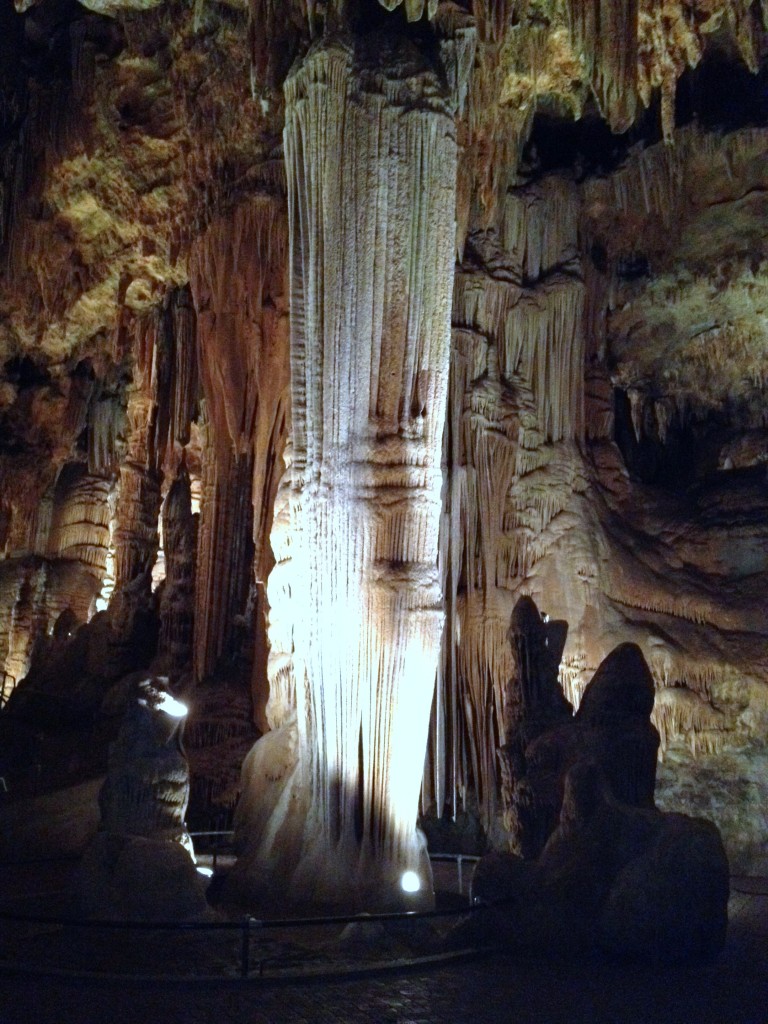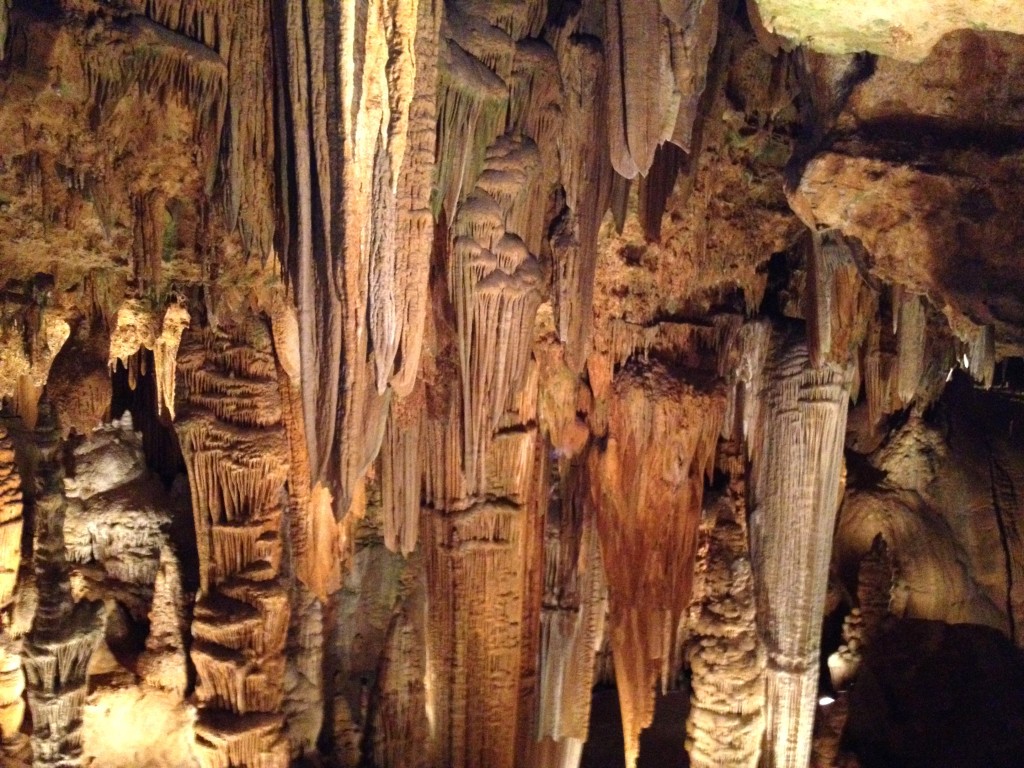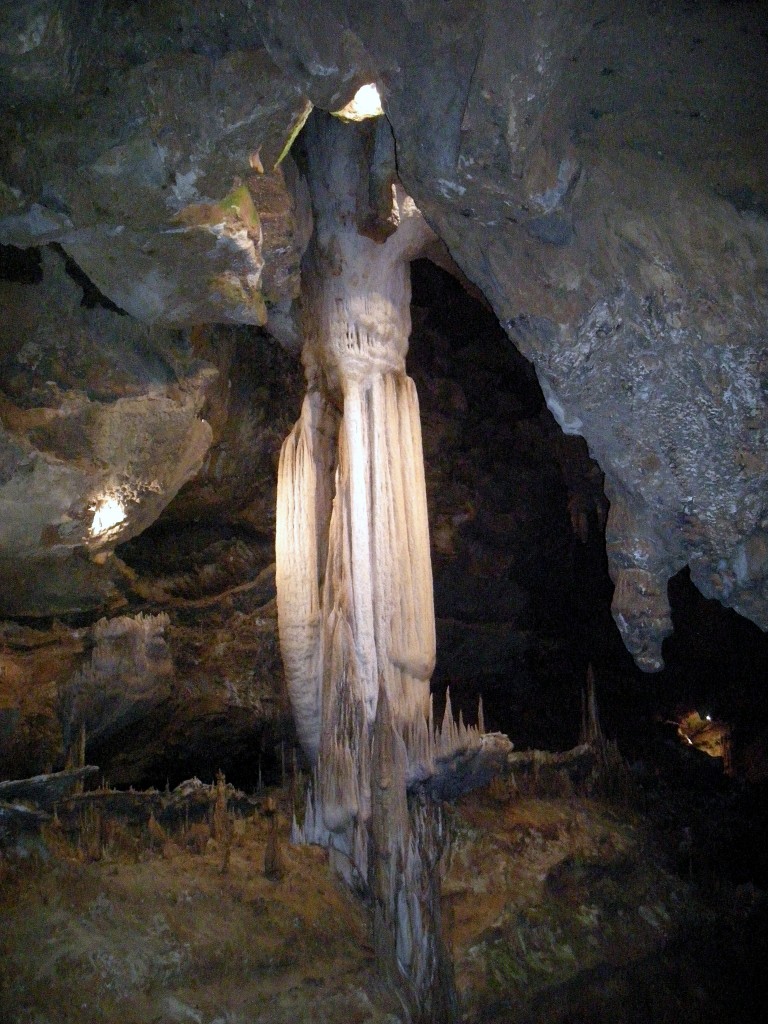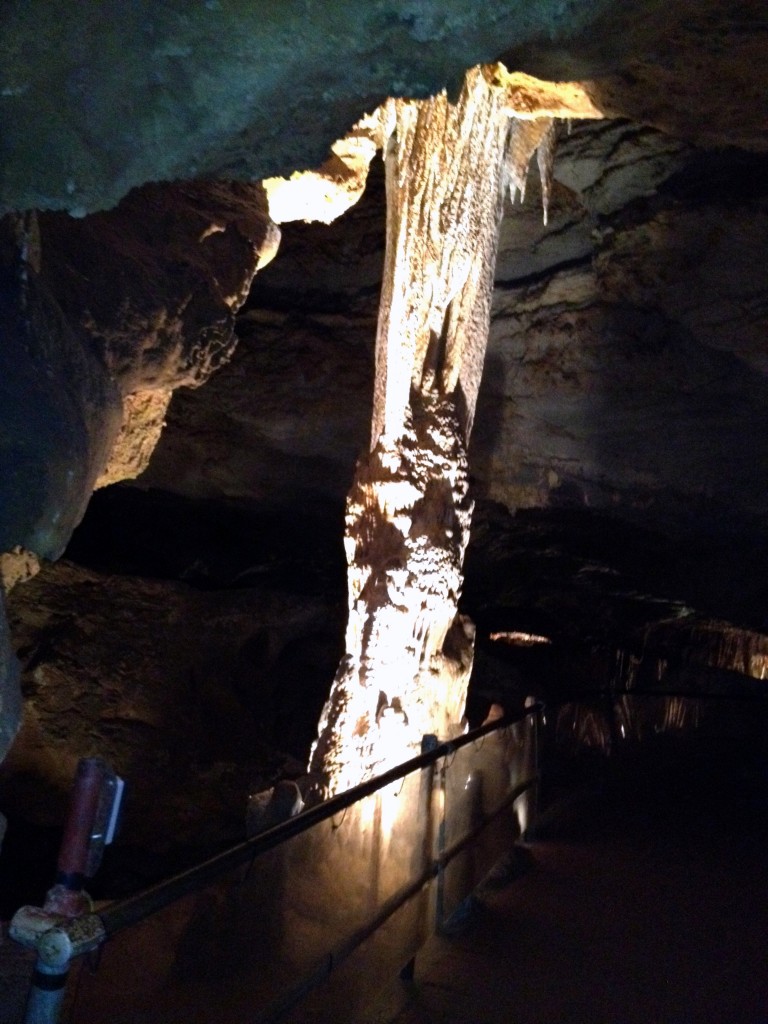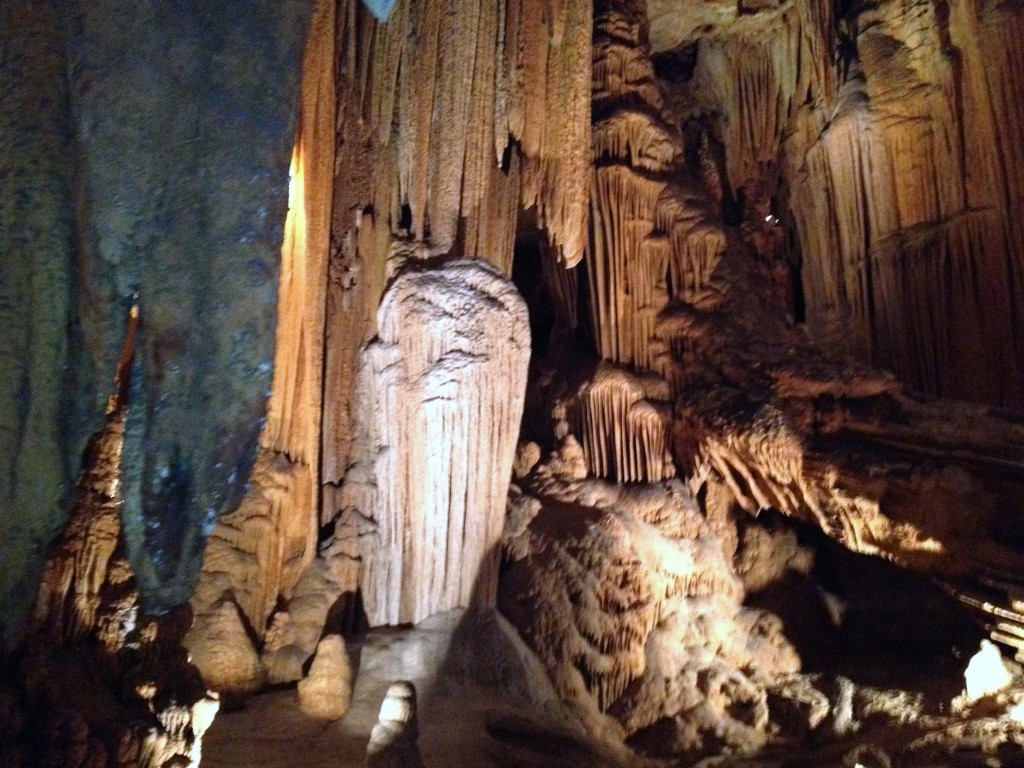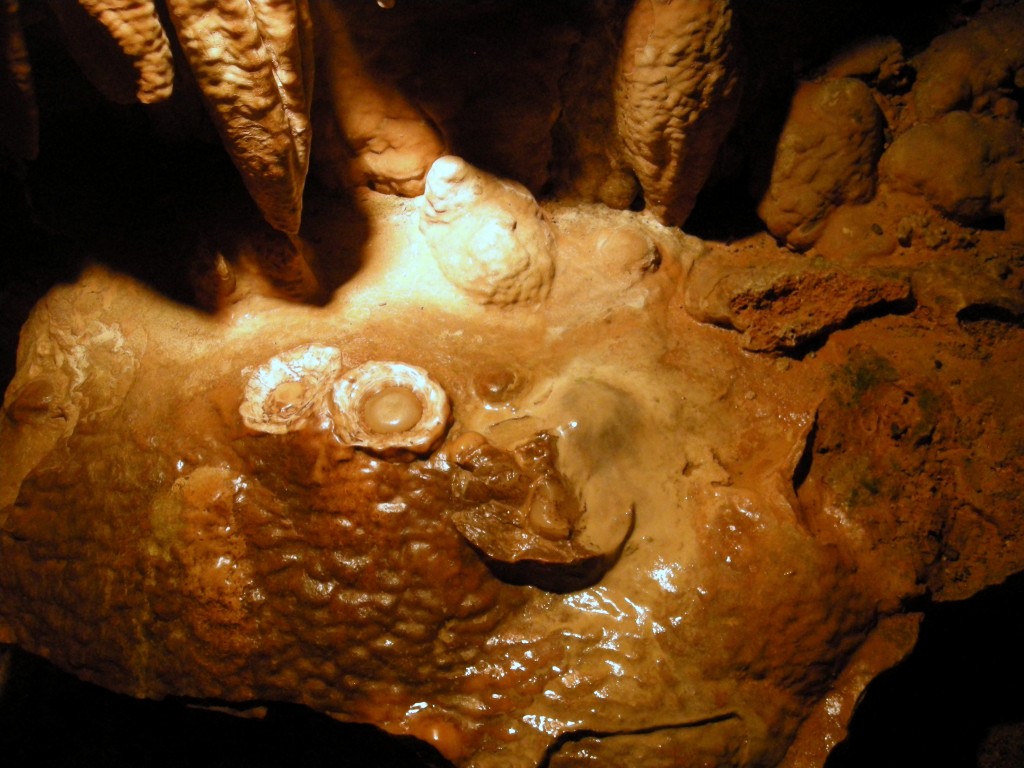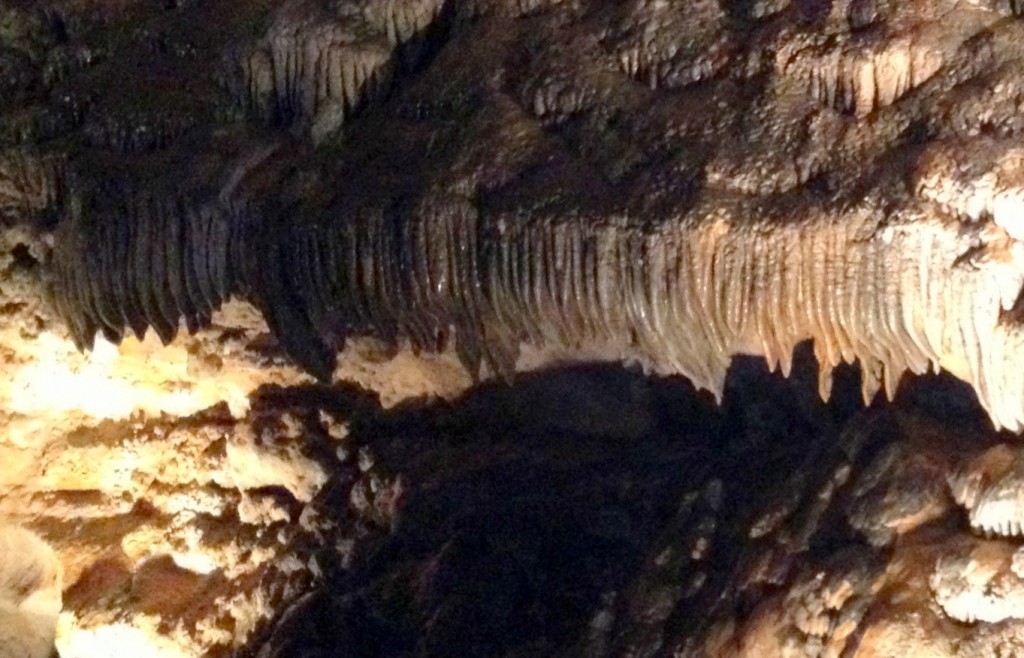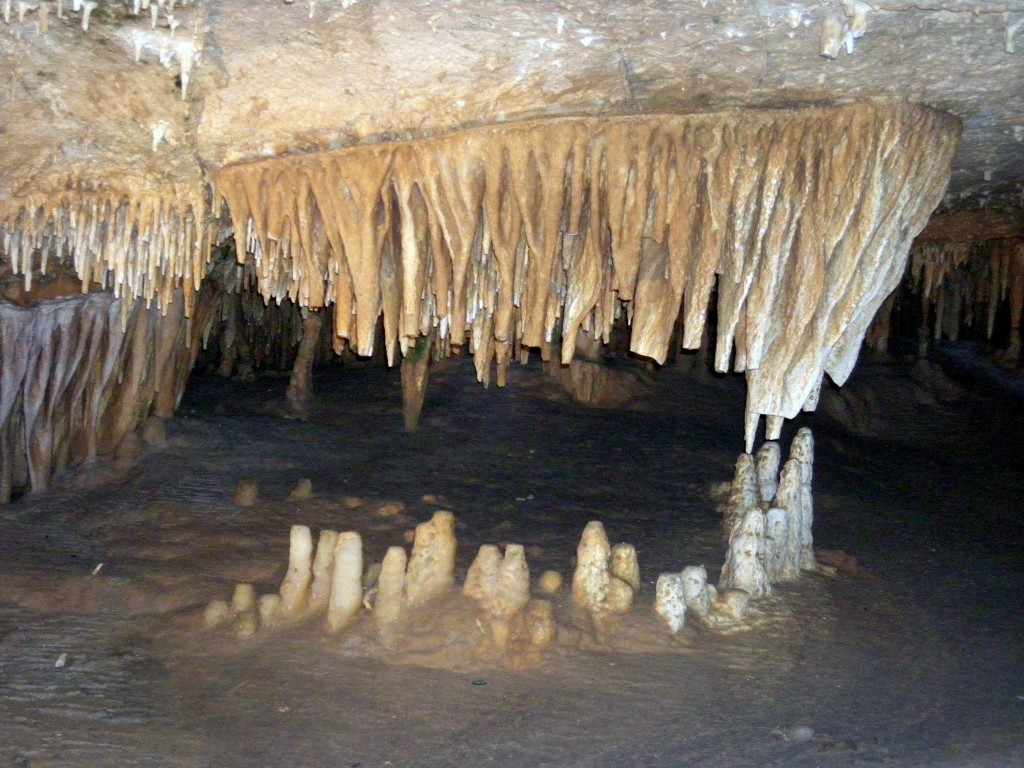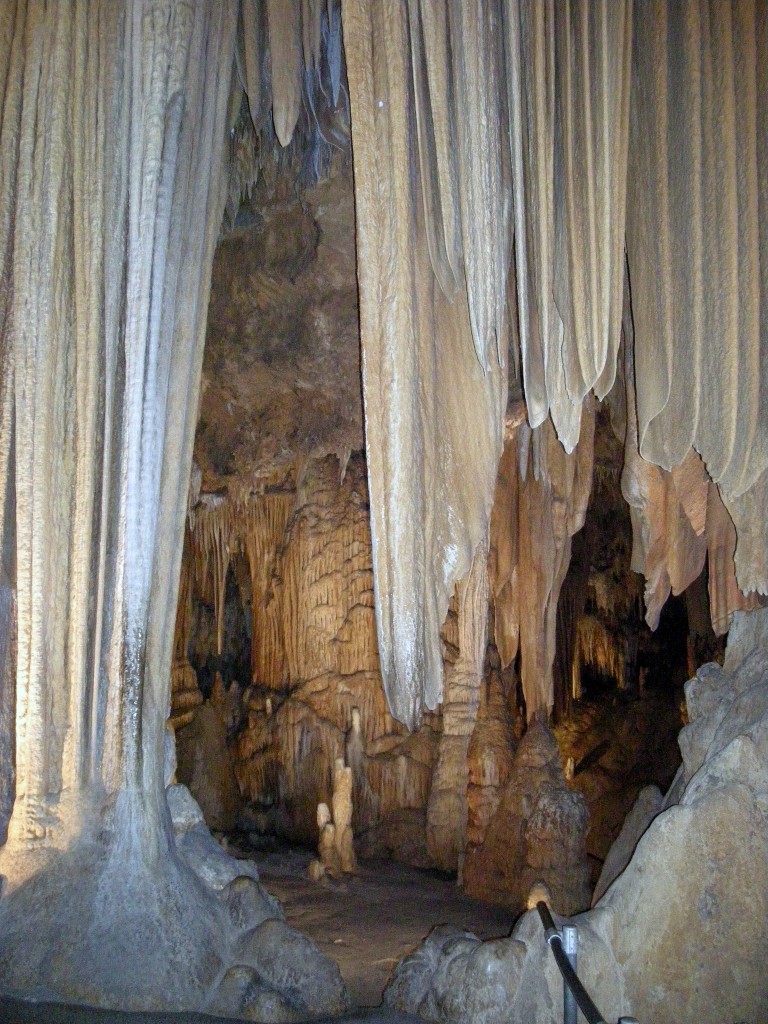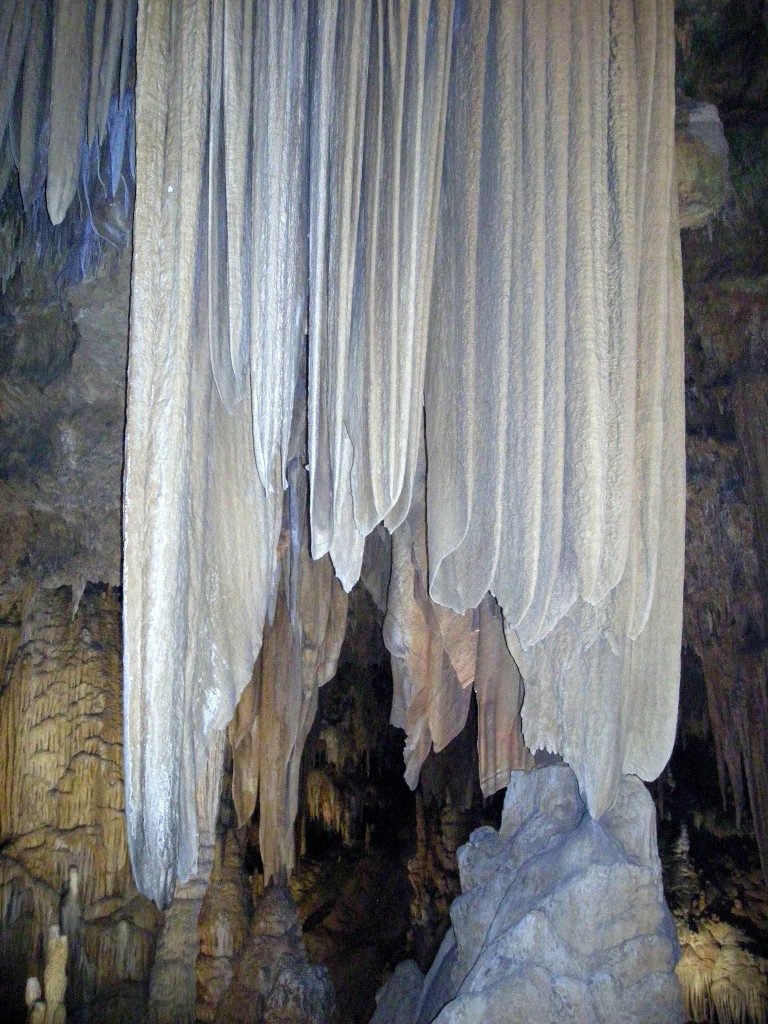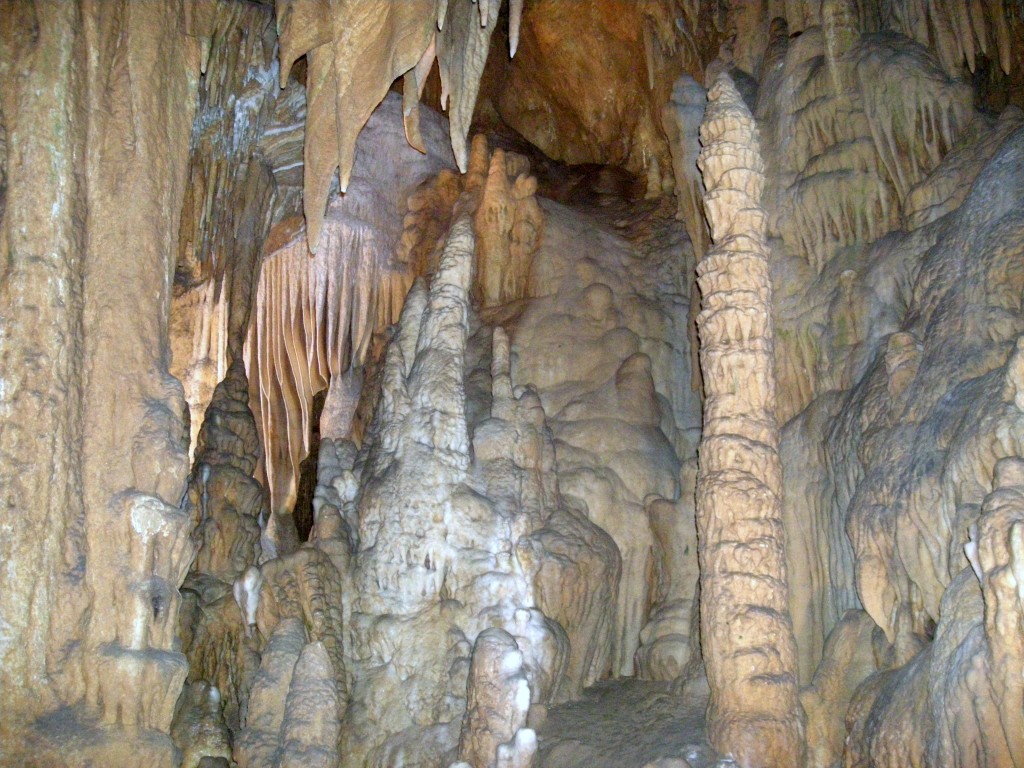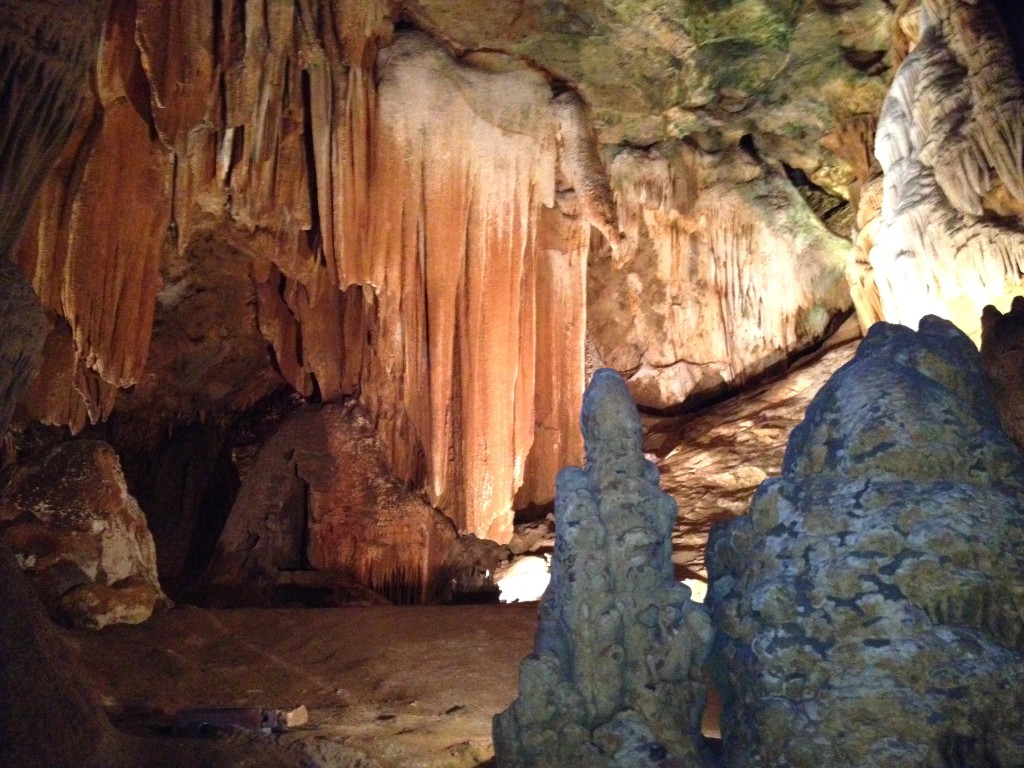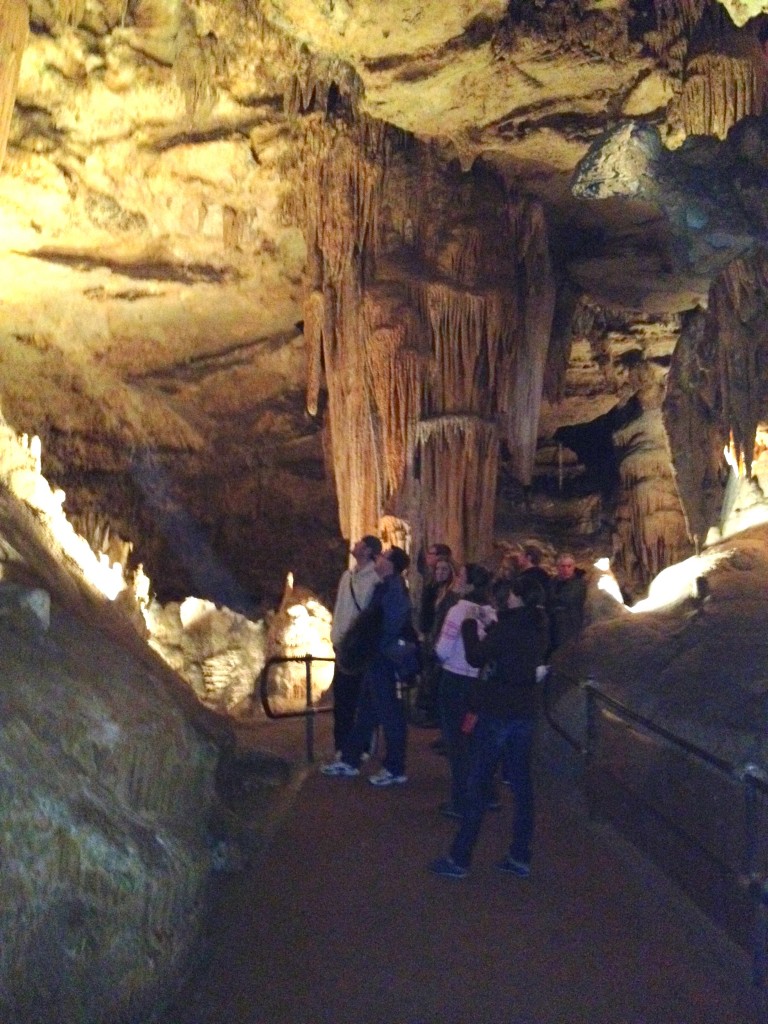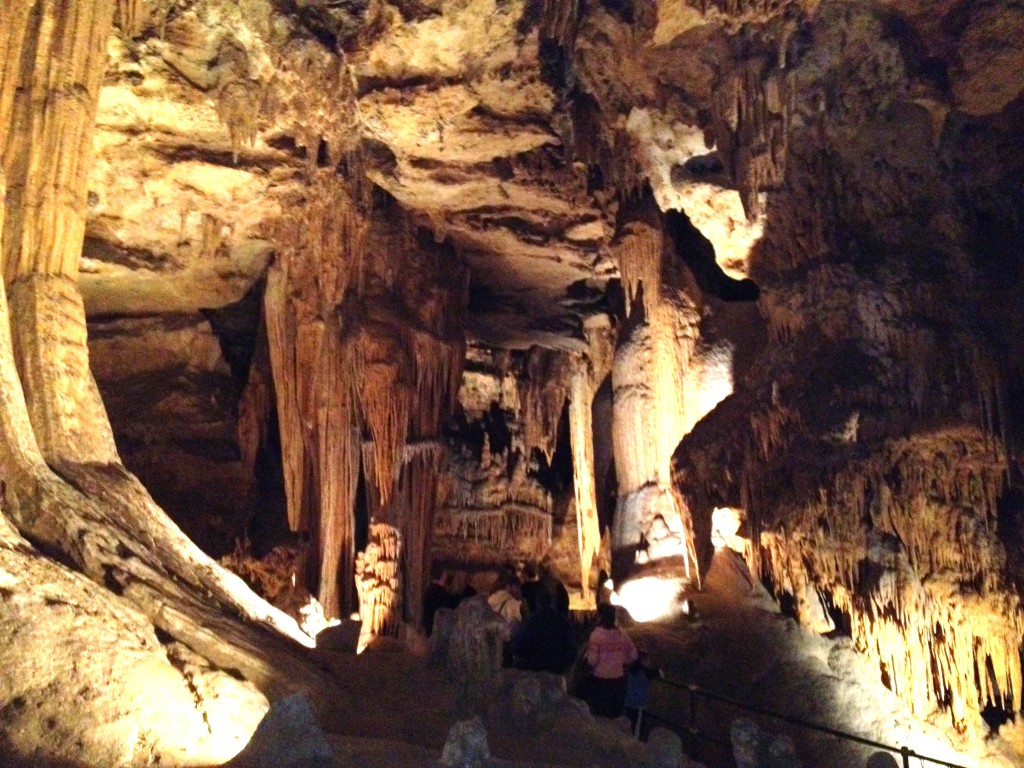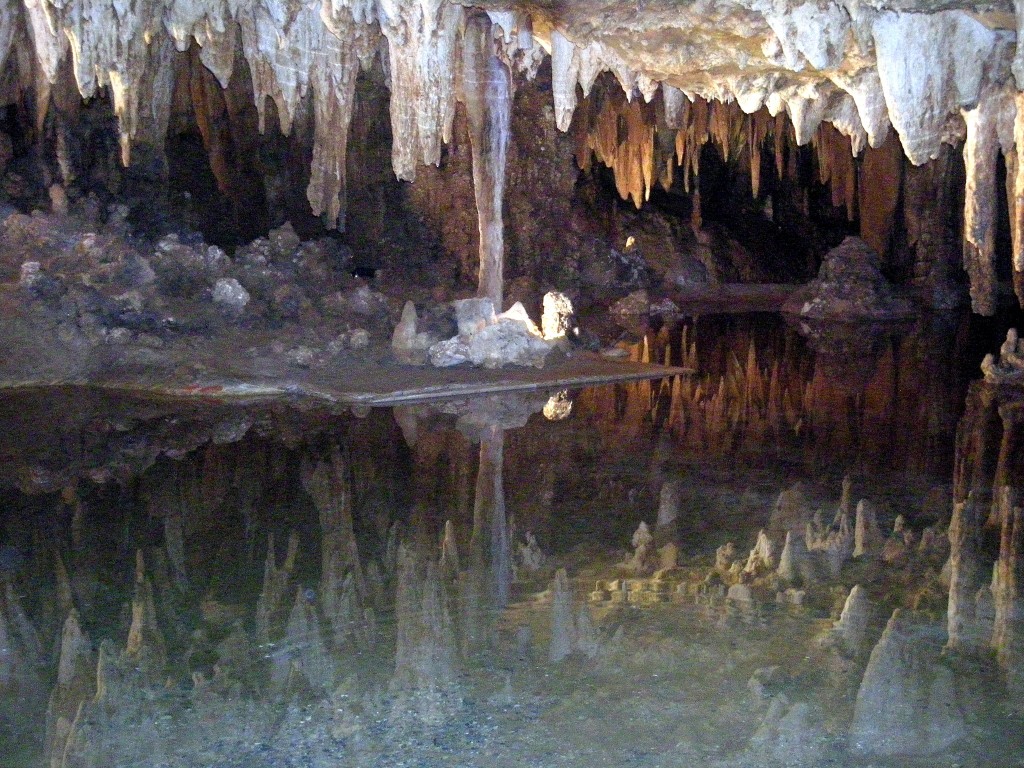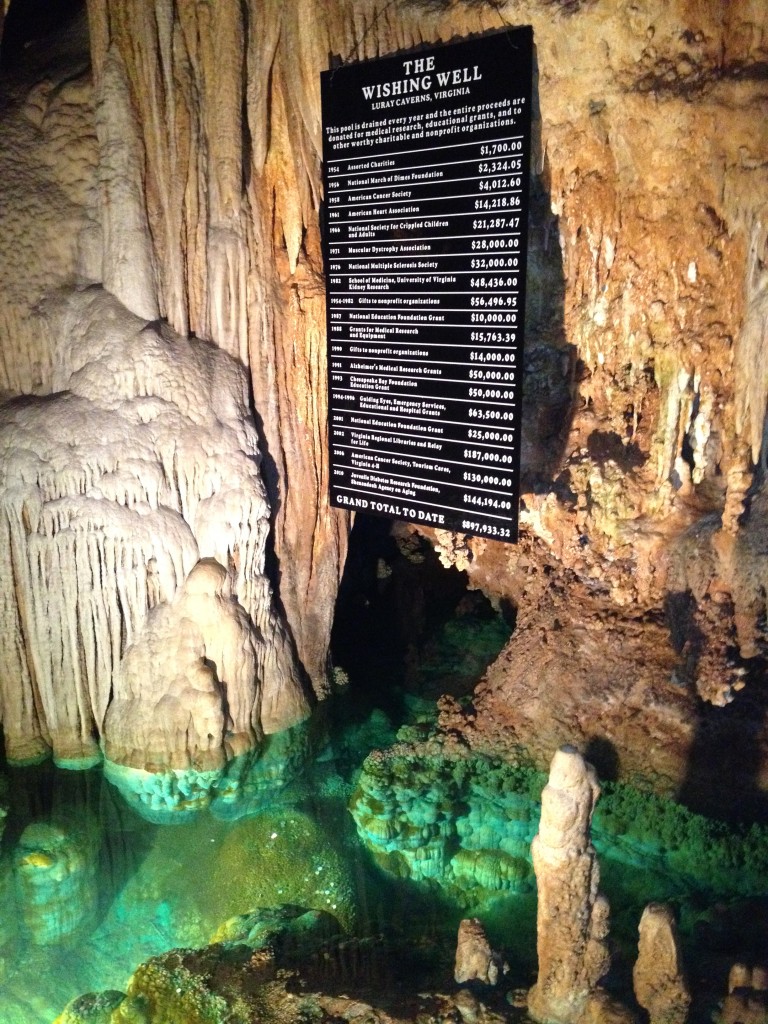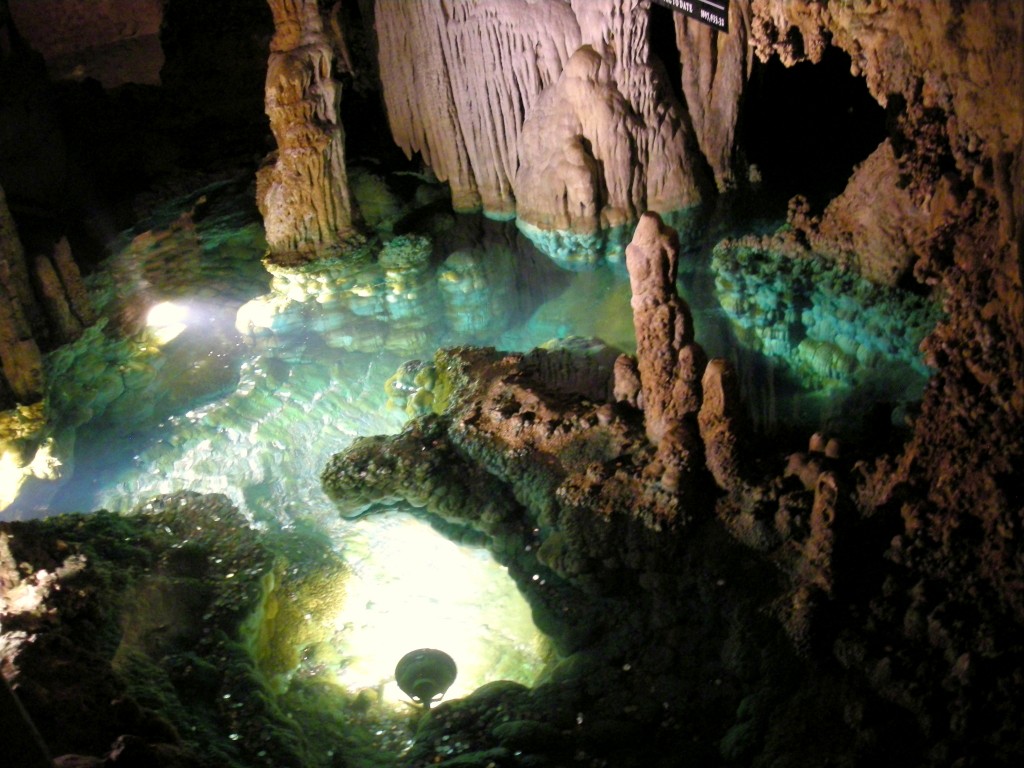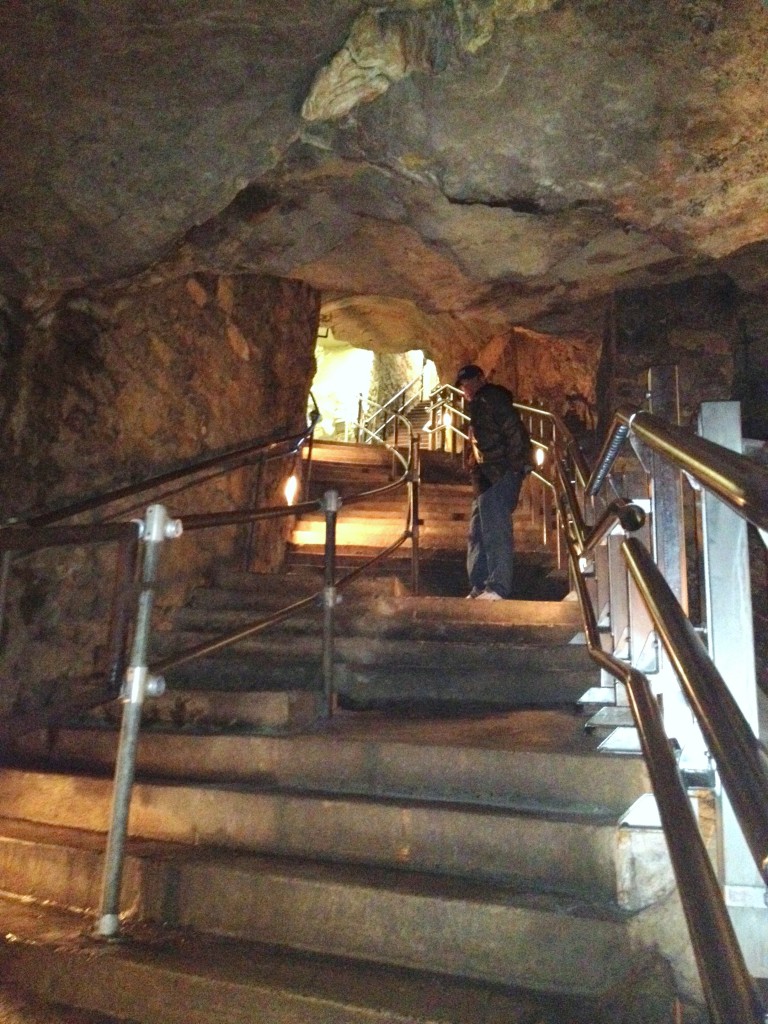Luray Caverns are the largest caverns in the eastern USA and a National Landmark. The Caverns are situated in the Shenandoah Valley in Luray, Virginia. Enormous chambers of the caverns are filled with towering columns, shimmering draperies and crystal-clear pools. The underground cavern system is generously adorned with speleothems (columns, mud flows, stalactites, stalagmites, flowstone, mirrored pools, etc.). A stalactite is a type of speleothem that hangs from the ceiling of limestone caves. It is a type of dripstone. The corresponding formation on the floor of the cave is known as a stalagmite. A column is a results of merging of stalactite with stalagmite. Flowstones are composed of sheetlike deposits of calcite formed where water flows down the walls or along the floors of a cave. Here is the picture from wikipedia with labeled speleothems.
A couple of weekends ago on the way home from Snowshoe Mountain we saw the Luray Caverns sign and decided to stop there. We had intended to visit the caverns for quite a while, so this time we decided not to miss the opportunity.
The parking lot at Luray Caverns was empty, probably because it was a Monday. We spotted the tower across the street from the parking lot. The name of the tower is The Luray Singing Tower, which is officially known as the Belle Brown Northcott Memorial. The tower was erected in 1937 opposite Luray Caverns in memory of Colonel T.C. Northcott‘s wife. At 117 feet in height, the Luray Singing Tower contains a carillon of 47 bells. Recognized as one of the country’s major carillons, 45-minute recitals are scheduled regularly throughout the spring, summer and fall.
Right inside the entrance we bought the tickets for a one hour tour.
The tour starts here and runs for about a mile and a quarter of casual walking, through cathedral-sized rooms with ceilings 10 stories high paved with walkways and ramps of brick and concrete.
Luray Caverns was discovered in 1878 by a tinsmith and a local photographer. Luray Caverns is an active cave where new deposits accumulate at the rate of one cubic inch in 120 years. The caverns are perhaps best known for the Great Stalacpipe Organ, a lithophone made from solenoid fired strikers that tap stalactites of various sizes to produce tones similar to those of xylophones, tuning forks, or bells. An organ console is electrically wired to specific stalactites throughout the cavern, each that creates it’s own note. It was created in 1954 by Leland Sprinkle, an electronic scientist at the Pentagon. Yes, the organ plays while the visitors are touring the Cathedral room. It is on an automated system that plays every few minutes.
The wires supporting the organ can be easily recognized in this picture.
The cave walls and ceilings are dense with varied speleothems, and brightly lit with electric bulbs covered with shades designed to blend into the rock. Notable formations are given picturesque and evocative names. Here are some of them:
Titania’s Veil is a glittering white formation of pure calcite and the result of wide-spreading crystalline deposits. These deposits, or flowstone, spread laterally coating walls or ceilings as opposed to dripstone resulting from dripping-water deposits. This picture depicts only a partial view of the Titania’s Veil.
Saracen’s Tent appears smooth and flowing like a curtain folded by hand. This formation is one of the most perfectly formed stone drapery structures in the world. From the Smithsonian report of July 1880 – “there is nothing more beautiful in the cave than these scarfs, shawls and lambrequins of translucent calcite, some as white as snow, others impregnated with the impurities of the soil above, falling in graceful folds, fringed with a thousand patterns, and so thin that a candle held behind one of them reveals all the structure within.” This is one of my favorite formations.
Our tour guide pointed out to us the red draperies that looked like bacon. They are in the middle right part of the picture.
Double Column is the tallest and one of the most spectacular formations in the caverns. Dominating Giant’s Hall at a height of 47 feet, the Double Column is a classic example of the two basic cave formations the stalactite and stalagmite. The ceiling here in Giant’s Hall is over 60 feet in height. From the standpoint of total airspace, this is also the largest room in the caverns.
Totem Poles is the cluster of stalactites and stalagmites that resemble totem poles. The poles illustrate how variable water and growth patterns can create gravity defying shapes.
Pluto’s Chasm is the main horizontal channel in the caverns as water eroded layer upon layer of limestone during the formation of these huge chambers over 400,000,000 years ago. This opening was created from the main horizontal channel of water that created Luray Caverns. This chasm is over 500 feet long, and is 70 to 90 feet in depth.
Pluto’s Ghost is a huge white column that rises to a height of almost ten stories, located in Pluto’s Chasm. This column is appropriately named after the Roman God of the underworld.
The Pluto’s Ghost column is visible from different vantage points throughout the caverns. We saw it several times during our guided tour.
A white formation in this picture looks like a ghost to me.
Fried Eggs is a curious rock formation at Luray Caverns. They look more like oysters on half shelf to me though.
Fish Market is another “foodlike” formation. The numerous flowstones are coming off the ceiling, which in fact do look like a bunch of sardines hanging up in a market.
This formation looks like a jaw full of teeth.
During our tour we observed all kinds of formations, from massive pillars with countless patterns to crystal fountains, cascades, chimes and draperies. With a little imagination everyone can find a favorite oddity. My favorite is the draperies.
The draperies in this picture resemble hanging towels.
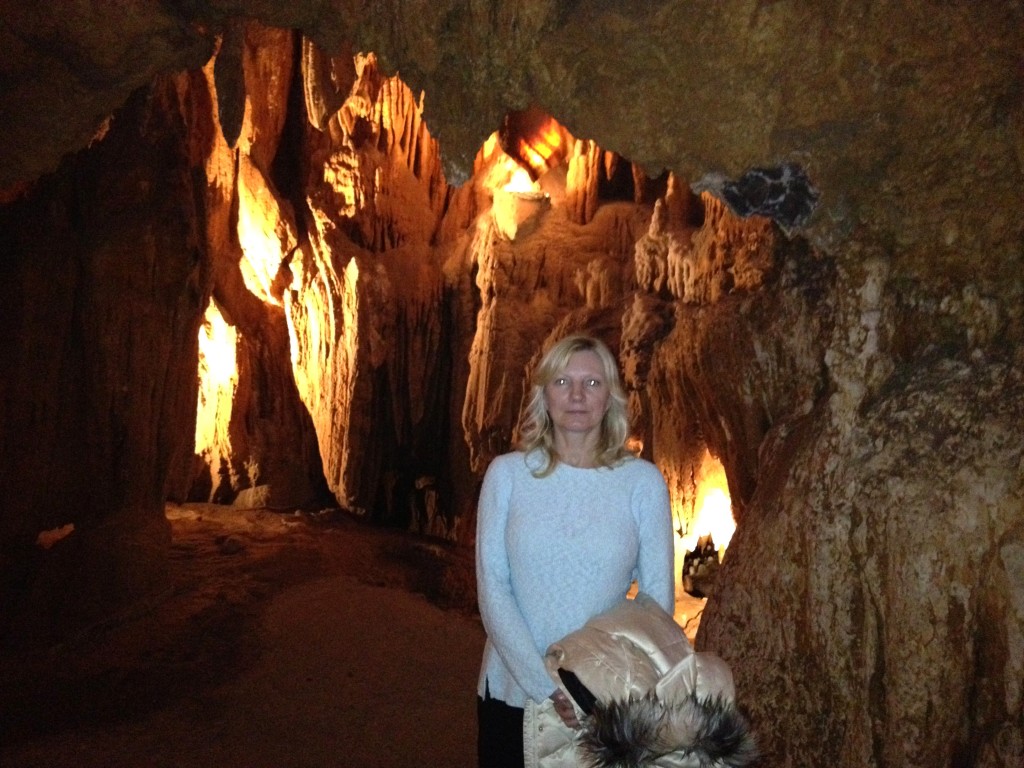
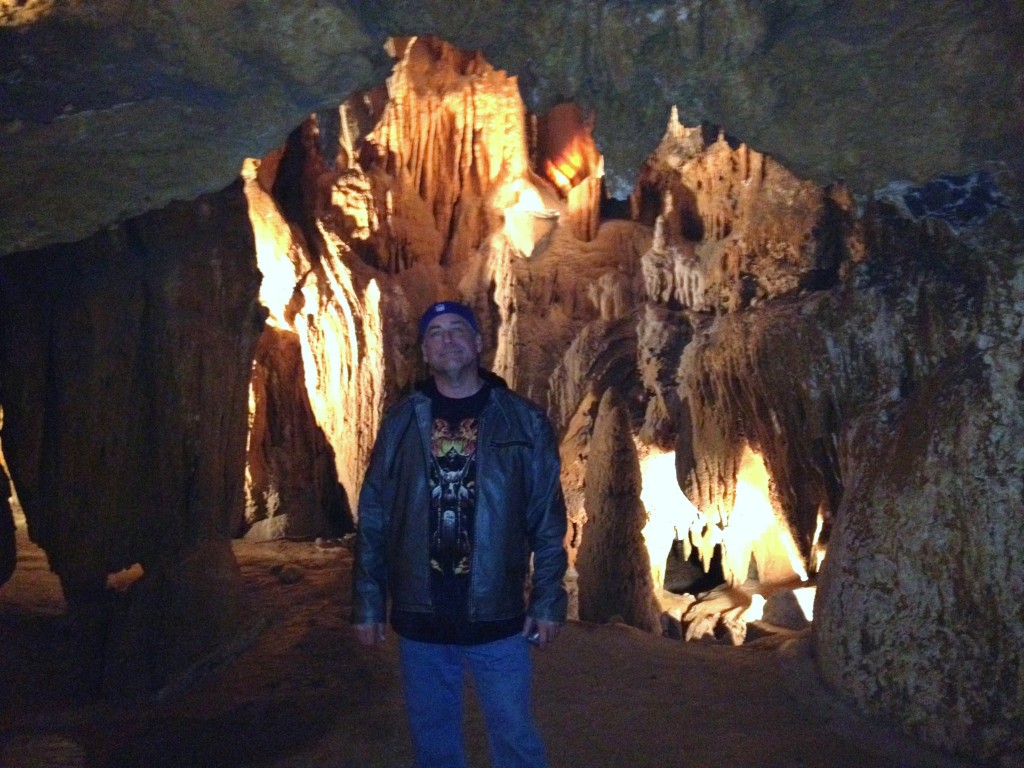
There is a spring of water called Dream Lake which has an almost mirror like appearance. Stalactites are reflected in the water making them appear to be stalagmites. This illusion is often so convincing that people are unable to see the real bottom. It looks quite deep, as the stalactites are higher above the water, but at its deepest point the water is only around 20 inches deep.
The Wishing Well is a three foot deep green pond with coins at the bottom. Like Dream Lake, the well also gives an illusion, however it is reversed. The pond looks 3–4 feet deep but at its deepest point it is actually 6–7 feet deep.
At the end of our tour we had to climb the stairs to exit through a gift shop, which had a beautiful selection of stones and crafts.
The General Admission rate includes the attraction entrance fee to the Luray Caverns tour, a self-guided tour of the Car and Carriage Caravan and access to the Luray Valley Museum. It was getting late and we were a couple hours away from home, so we visited only the caverns. The caverns are the best I’ve seen so far and I would like to visit them some time again.




